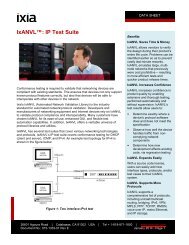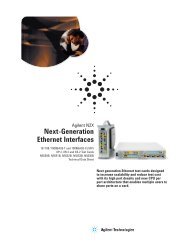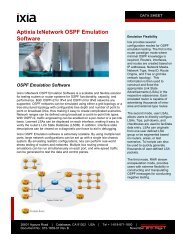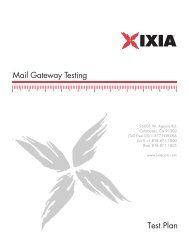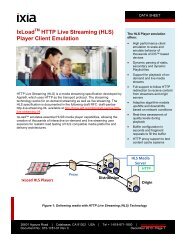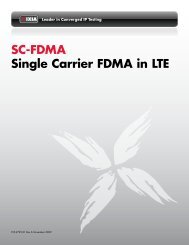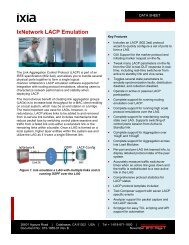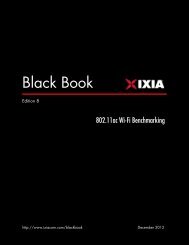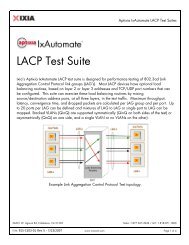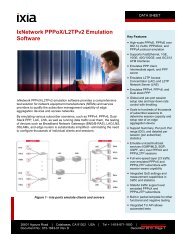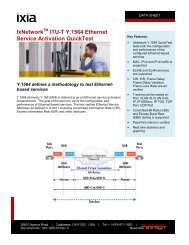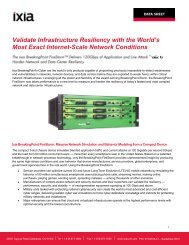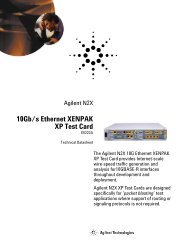10-Gigabit Ethernet Switch Performance Testing - Ixia
10-Gigabit Ethernet Switch Performance Testing - Ixia
10-Gigabit Ethernet Switch Performance Testing - Ixia
You also want an ePaper? Increase the reach of your titles
YUMPU automatically turns print PDFs into web optimized ePapers that Google loves.
What Happens to a<br />
Packet When It<br />
Enters a <strong>10</strong>GE Port?<br />
Figure 1. <strong>10</strong>GE switch building blocks.<br />
This section provides a high-level<br />
walkthrough of the “life of a packet” as it<br />
goes from a port on an ingress line card<br />
through the switch fabric card and exits on<br />
an egress line card. Figure 2 shows the<br />
logical operation of various line cards in a<br />
multi-<strong>10</strong>GE port switch, and identifies the<br />
stress points (numbered red circles).<br />
Storing the packet<br />
When a packet arrives on a <strong>10</strong>GE port, it is<br />
stored in ingress buffer memory while<br />
waiting to be processed by the packet<br />
processor. When the packet processor is<br />
ready, the packet header is copied into the<br />
packet processor memory for processing.<br />
Processing the packet<br />
The packet processor (ASIC or NPU)<br />
examines the packet to determine whether<br />
a packet should be filtered or forwarded. It<br />
makes this determination by parsing the<br />
packet header and then performing packet<br />
and flow classification.<br />
The classification process maps<br />
information extracted from the packet<br />
header to information stored in local tables<br />
maintained by the control plane processor.<br />
The information in the classification tables<br />
typically includes forwarding tables,<br />
routing tables, and profiles or rules for a<br />
given packet or flow, such as policies for<br />
ACLs, Quality of Service (QoS), and Class of<br />
Service (CoS).<br />
The classification typically points to many<br />
fragments of information about a packet.<br />
This information is usually saved in context<br />
memory and may contain instructions<br />
about whether to deny or forward the<br />
packet, where to forward it, all additional<br />
header information to get a packet from<br />
ingress to egress port, the new header<br />
used when it leaves the egress port (new<br />
MAC, IP, MPLS stacks, etc.), information<br />
relevant to policing the packet (see<br />
"Metering and statistics recording" below),<br />
and other information about how to<br />
process the packet.<br />
8 Copyright © 2004, <strong>Ixia</strong> <strong>10</strong>-<strong>Gigabit</strong> <strong>Ethernet</strong> <strong>Switch</strong> <strong>Performance</strong> <strong>Testing</strong>



